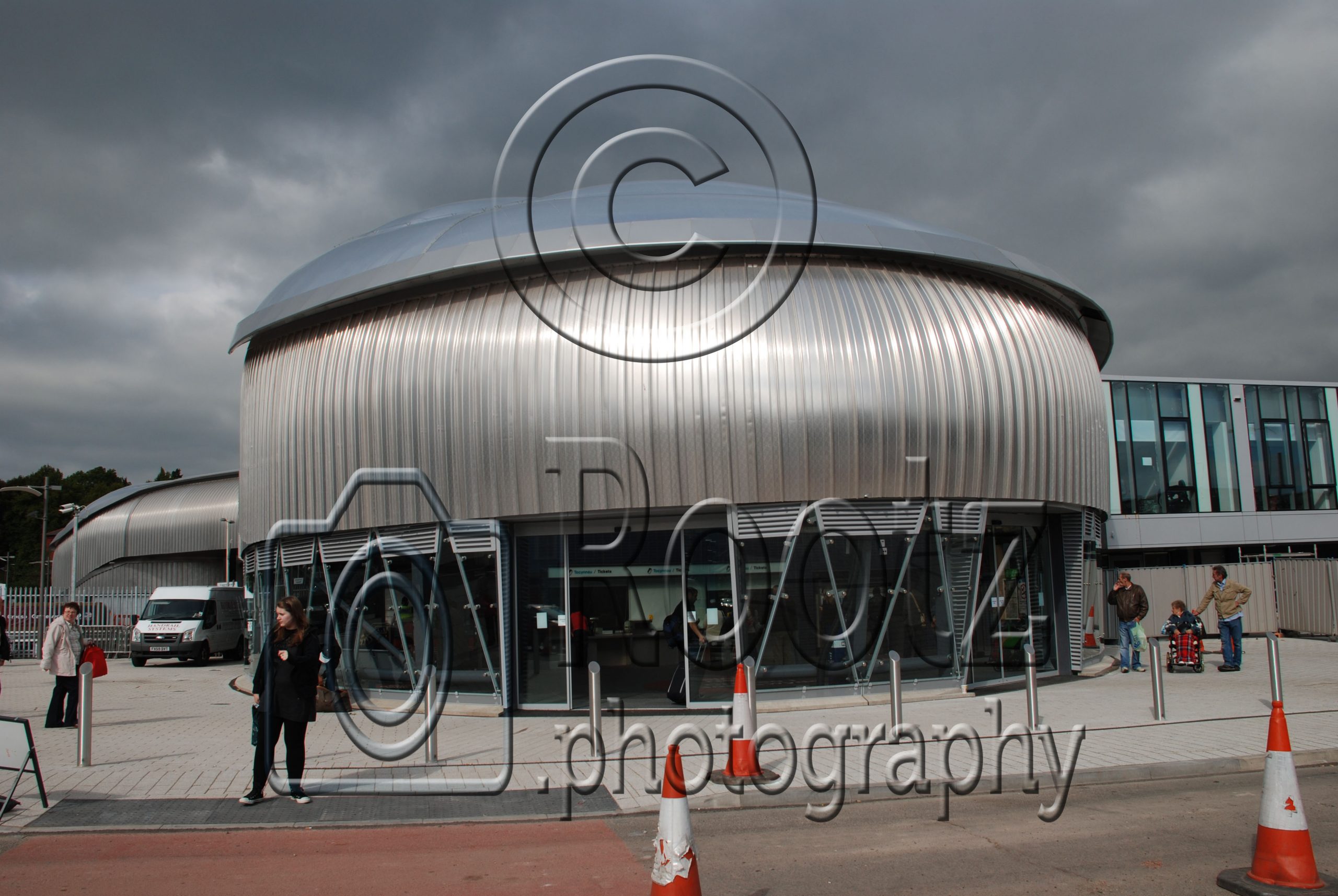Newport railway station is the 3rd busiest railway station in Wales (after Cardiff Central and Cardiff Queen Street), situated in the heart of the city of Newport. It is part of the British railway system owned by Network Rail and is operated by Arriva Trains Wales, although First Great Western and CrossCountry also provide services.
The main station entrance is located on Queensway, and a small section of road known as Station Approach links this to the High Street. The station was originally opened in 1850 by the South Wales Railway Company and was greatly expanded in 1928. British Transport Police maintain a presence at Newport.
History
The current station layout consists of four through-platforms numbered 1 to 4 from the south side. The original broad gauge station had only two 200ft-long through platforms and a bay platform at the east end of the down platform. On the closure of Dock Street and Mill Street stations to passengers in 1880, High Street station was greatly expanded: The up platform was made into an island – the north face 825ft in length, and the south side 814ft. The down platform was extended to 897ft with the west end bay extended to 428ft. Two scissors crossovers were provided on these new platforms, effectively dividing them into two. The original down platform became Nos. 1 and 2. The bay became No. 3, the south face of the up platform Nos. 4 and 5 and the north face Nos. 6 and 7. The bay platform was mostly used for Monmouthshire western valleys services, but with the quadrupling of the line in 1912 trains from the bay platform (on the south side) now had to cross the entire station to get to the Gaer Tunnel on the north side. To address this the former loading dock on the north side of the station was made into a passenger platform (No. 8).
April 1961 saw the introduction of colour Multiple-Aspect Signalling and associated modifications to the station layout. The north face of the island platform became the new up platform, with the south face becoming the new down. The platforms were also renumbered in the opposite direction, with No. 8 becoming No. 1, Nos. 6/7 becoming 2/3, Nos. 4/5 remained the same and Nos. 1/2 were combined as a new No. 6. Subsequent removal of the scissors crossovers saw a further combination and renumbering of platforms to the current layout.
Formerly named Newport High Street, the suffix High Street became unnecessary on the closure of Mill Street and Dock Street stations to goods traffic in the 1960s. Printed tickets and National Rail enquiries use the suffix “South Wales” to differentiate this station from its namesake in Essex. Newport Unlimited have suggested the station is officially renamed Newport City railway station.
2007 Redevelopment
The Welsh Assembly Government and Network Rail agreed a £20 million makeover for the station that provided a new concourse, a second pedestrian bridge over the tracks and a user-friendly bus-rail interchange at the station. The plans also included an extended platform 4 capable of accommodating up to twelve-carriage intercity trains and a new multi-storey car park for long-stay travellers.
The initial redevelopment of Platform 4 did not allow for disabled access, resulting in station staff using a locally-contracted taxi firm at £3 a passenger to move disabled and elderly passengers the half-mile from one side of the station to the other, in a complimentary service provision. The first phase, platform 4 extension, was completed on 2 July 2007, with design works completed by Atkins.
2009 Redevelopment
Planned to enable the station to cope with passenger traffic associated with the 2010 Ryder Cup, a second passenger bridge linking the whole station with a lift for all platforms, a new bus station developed and a 250-capacity multi-storey car park. Network Rail claimed accessibility and safety are at the heart of the new design. The new bridge will be clad in Ethylene tetrafluoroethylene (ETFE), the material which protects the Eden Project in Cornwall. The station was designed by Atkins Engineers based in the Cardiff and Swindon, with the support from Grimshaw Architects. he new north and south concourses opened on 13 September 2010.
Discover more from LandmarkLocation.com
Subscribe to get the latest posts sent to your email.


